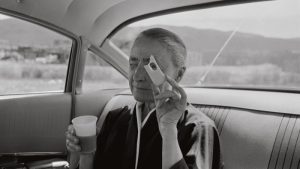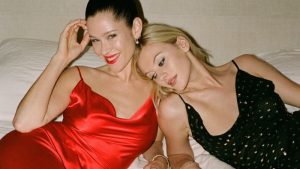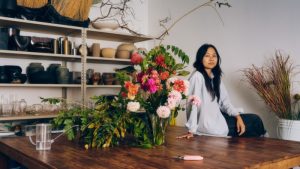The best blushers of 2024
Unlock the Editor’s Digest for free
Roula Khalaf, Editor of the FT, selects her favourite stories in this weekly newsletter.
In my teens, I declared blush my nemesis. I wanted to look sophisticated, worldly – not doll-like and definitely not flushed, a look my then-constant proximity to embarrassment delivered for free. It was the tonal 2010s: the reign of Cara’s brows, of Kim’s contour, of the ubiquitous Naked palette. If someone had predicted that 28-year-old me would own not one but six blushes, I would’ve baulked.

To paint the blush boom by numbers, look no further than Selena Gomez’s Rare Beauty. Known for its pigmented Soft Pinch Liquid Blush, the brand sells one unit every nine seconds. According to Samantha Timson, make-up buyer at Space NK, the number sold last year could fill Wembley Stadium one and a half times. Other bestselling blushers sold by the retailer include Milk Makeup’s Cooling Water Jelly Tint, Hourglass’s Unreal Liquid Blush and Kosas’s Blush Is Life.

Rare Beauty Soft Pinch Liquid Blush, £23

Milk Makeup Cooling Water Jelly Tint, £22, spacenk.com

Hermès Silky Blush Powder in Rose Abricot, £65

Lancôme Blush Subtil in Sorbet de Corail, £34
Make-up artist Lisa Eldridge, who also has a namesake brand, saw the shift coming in 2016, when she posted a YouTube tutorial inspired by make-up in the east (a fusion of trends from China, Japan and South Korea) and the west (a Kardashian-meets-Bellucci smokey eye). “The big difference was the blush,” Eldridge says of applying Lancôme’s Blush Sutil in Sorbet de Corail high on her cheekbones. It was a reference to Japanese Igari style, named after make-up artist Igari Shinobu and nicknamed “drunk girl” make-up for how it emulates a merry flush.
“One of the top comments was, ‘You look so much younger,’” Eldridge says, crediting the influx of Asian beauty trends for blusher’s recent popularity. Eight years later, Igari-style blush has gone mainstream, though western TikTokers will recognise the technique as “strawberry girl make-up”, “sunburnt blush” or “après-ski make-up”. Other trending techniques include “blush-touring”, where a single product is used as blush, contour, eyeshadow and lipstick; “sunset blush”, which takes light-catching tropical tones up towards the temples; and “boyfriend blush”, where blush is blended down to the jawline to give the ruddy complexion of a man post-workout – think Prince William on the polo field.

Our obsession with blush has always ebbed and flowed. Professor Jill Burke, a historian of the body and its visual representation in Europe at the University of Edinburgh, observes its links to youthfulness and good health during the Renaissance, a period rife with skin diseases and smallpox. Blush, which women made at home from red sandalwood or bought from small producers, helped to level the playing field. “It was an attempt, even if everything wasn’t OK, to suggest that things were,” says Burke. For the rosy-visaged Venetian aristocracy of the 18th century, and Marie Antoinette, blush was a class thing, says Eldridge: “The more you wore, the higher status you were.” The French Revolution effectively outlawed the product, but it came back in the mid-20th century, along with bronzing powder and the year-round tan.

Dior Rosy Glow in Pink, £35

Kosas Blush Is Life in Swoon, £27
As in fashion, social media has warped the trend cycle: many techniques are just new names for old trends. Current methods may be reminiscent of vintage editorials, but we’re now using a far greater range of shades and finishes, from matte to luminous, powder to cream.
Have we reached peak blush? Yes, predicts Eldridge, who says we’ll see the return of subtler looks soon. But she’s keeping her rouge on hand, blush police be damned. Neither am I quite ready to say goodbye to my faux post-run flush. “It’s charming to look back at a photo of yourself and be able to say, ‘Oh my God, I used to wear so much blush’ – or blue eyeshadow,” says Eldridge. “Wouldn’t it be a boring world if everyone’s make-up was impeccable?”
#blushers






